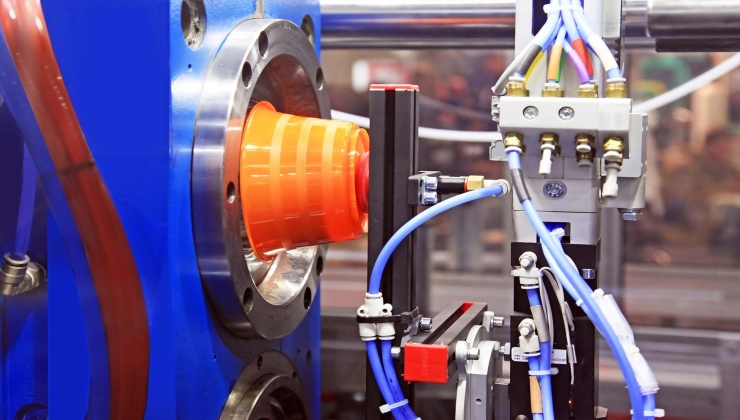As industries evolve, so do the technologies and materials that drive them. Two areas undergoing significant transformation are the use of refrigerants in HVAC systems and the production of custom plastic components through injection molding. This article explores these advancements, providing insights into how these changes impact both manufacturers and consumers.
The Shift to A2L Refrigerants: What You Need to Know
The transition to A2L refrigerants marks a pivotal moment in the HVAC industry. These refrigerants, classified as mildly flammable, are being introduced to replace older, higher-global-warming-potential (GWP) refrigerants in compliance with environmental regulations. As this transition occurs, industry professionals and consumers must understand the implications, and galarson.com can provide valuable insights and updates.
Why A2L Refrigerants Matter
A2L refrigerants are not just a regulatory requirement; they represent a shift toward more sustainable and environmentally friendly cooling solutions. While their mild flammability poses new challenges, their lower GWP makes them an essential part of the global effort to combat climate change. The adoption of A2L refrigerants is expected to reduce the environmental impact of HVAC systems significantly.
Interestingly, did you know that the development of A2L refrigerants has roots in the quest for alternatives to traditional chlorofluorocarbons (CFCs) in the 1980s? This ongoing evolution highlights how innovation drives sustainability in unexpected ways.
Custom Plastic Injection Molding: Precision and Innovation in Manufacturing
Custom plastic injection molding, such as the services provided by http://www.wundermold.com, is a cornerstone of modern manufacturing, offering precision, efficiency, and versatility in producing complex plastic components. This process has been pivotal in industries ranging from automotive to medical devices, and its applications continue to expand.
The Science Behind Injection Molding
Injection molding involves injecting molten plastic into a mold, where it cools and solidifies into the desired shape. This method is renowned for its ability to produce high volumes of parts with consistent quality, making it ideal for mass production. The versatility of injection molding allows for the creation of intricate designs that would be impossible or cost-prohibitive with other manufacturing methods.
One fascinating aspect of injection molding is its origin. The first injection molding machine was patented in 1872 by John Wesley Hyatt and his brother, Isaiah. They used it to create billiard balls, a revolutionary innovation at the time. Today, the process has evolved to include advanced materials and technologies, making it a critical component of modern manufacturing.
The Intersection of Refrigerant Transition and Injection Molding
While A2L refrigerants and custom plastic injection molding may seem unrelated, they intersect in the manufacturing of HVAC system components. As the industry transitions to A2L refrigerants, the demand for high-quality, durable plastic components—produced through injection molding—will increase.
Meeting the Challenges of New Refrigerants with Custom Molding
The shift to A2L refrigerants requires components that can withstand different operating conditions, including changes in pressure and temperature. Custom plastic injection molding offers the flexibility to create parts that meet these specific needs, ensuring the reliability and safety of new HVAC systems.
Interestingly, the precision of injection molding allows manufacturers to produce components that are not only durable but also lightweight. This is particularly important in HVAC systems, where reducing weight can lead to improved energy efficiency.
Opportunities and Challenges
The ongoing advancements in refrigerants and plastic molding present both opportunities and challenges for the industry. As these technologies continue to evolve, staying informed and adapting to changes will be key to success.
The Role of Innovation in Sustainability
Innovation is at the heart of both A2L refrigerants and custom injection molding. By embracing new materials and processes, manufacturers can contribute to a more sustainable future. For example, the use of recycled plastics in injection molding is gaining traction, reducing waste and conserving resources.
Did you know that some of the latest innovations in injection molding include the use of bioplastics, made from renewable sources like corn starch and sugarcane? These materials offer the potential to reduce our reliance on petroleum-based plastics, further enhancing sustainability efforts.
Conclusion: Preparing for the Future
As the HVAC and manufacturing industries continue to evolve, understanding the implications of new refrigerants and manufacturing techniques is essential. The transition to A2L refrigerants and the ongoing advancements in custom plastic injection molding offer exciting opportunities for those willing to embrace change.
By staying informed and adapting to these innovations, industry professionals can ensure they are prepared for the challenges and opportunities that lie ahead. Whether you’re involved in HVAC, manufacturing, or simply interested in the latest technological trends, these developments are sure to shape the future of our industries.
The future of refrigerants and plastic molding is bright, driven by innovation and a commitment to sustainability. As these technologies continue to advance, they will undoubtedly play a crucial role in shaping the world we live in.


